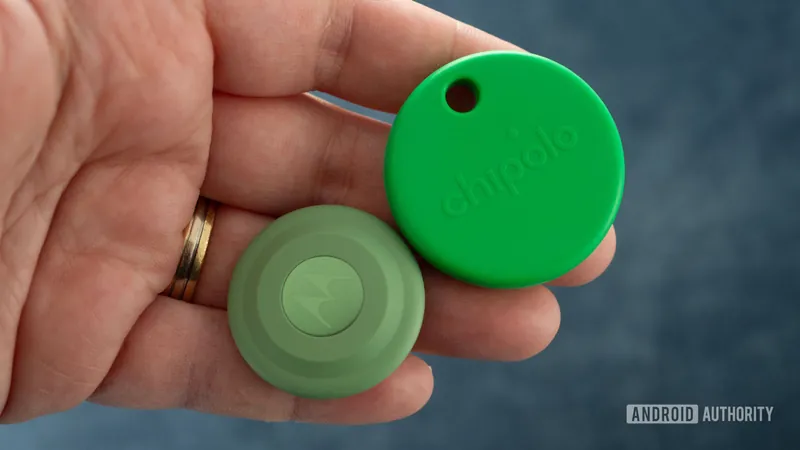
Why Chipolo and Motorola Trackers Outshine Google's Find My Device
2025-04-26
Author: Yan
The Rise of Bluetooth Trackers: The Good and the Bad
In just under a year since Google introduced its Find My Device, a competitor to Apple's AirTag network, the Bluetooth tracking landscape has changed dramatically. Despite adding new devices and features, the overall experience still feels underwhelming. The Chipolo POP and Moto Tag shine as the top choices for tracker enthusiasts, both bringing extra functionality that Google’s platform seems to lack.
Google's Basic Tracking Experience
When it comes to device tracking, Google’s Find My Device can be described as extremely basic. Users can locate their devices, check battery levels, sound a ring, and share their trackers with family, but that’s where the functionality stops. Unlike Apple, which has introduced helpful left-behind notifications, Google still hasn’t caught up. Meanwhile, other players like Tile and Samsung have long offered much more advanced features, such as location history and customizable ringing.
The Workaround: Third-Party Apps
To fill the void left by Google, Chipolo and Motorola have opted for a clever workaround: they’ve developed their own apps to unlock a treasure trove of features. Upon setting up the Moto Tag and Chipolo POP, users are prompted to download their respective apps, which significantly enhance functionalities.
Enhancing Your Tracking Experience
Both the Moto Tag and Chipolo POP still connect to Google’s network, but without their standalone apps, they are merely average trackers. With the Moto Tag app, users gain access to features like choosing from four different ringtones, a reverse-finding function to ring a misplaced phone, a remote camera shutter, and firmware updates.
The Chipolo POP takes it a step further with 12 ringtone options, a flashlight feature for phone hunting in the dark, and a left-behind alert that can save you from leaving your valuables behind. In a household like mine with multiple floors, the reverse-ringing feature has been a game-changer.
The Shortcomings of Google’s Approach
This situation starkly highlights the limitations of Google’s platform. While third-party trackers provide an expanded feature set, it’s frustrating that these essential capabilities aren't available through the native Find My Device app. Simple additions like left-behind alerts, customizable ringtones, and more could revolutionize the user experience.
The Unification Failure of Tracking Systems
The idea behind Google’s and Apple’s tracking networks is to create a unified experience—no more relying on proprietary apps or scattershot features. Yet here we are, with top-tier trackers requiring standalone apps due to Google’s inability to meet basic user needs.
The Ideal Solution
Overall, it would be far more desirable if the distinctions between trackers stemmed from hardware design rather than software requirements. Features should not hinge on extra downloads; instead, Google should strive to bolster its main offering and provide a consistantly rich experience for all users.


 Brasil (PT)
Brasil (PT)
 Canada (EN)
Canada (EN)
 Chile (ES)
Chile (ES)
 Česko (CS)
Česko (CS)
 대한민국 (KO)
대한민국 (KO)
 España (ES)
España (ES)
 France (FR)
France (FR)
 Hong Kong (EN)
Hong Kong (EN)
 Italia (IT)
Italia (IT)
 日本 (JA)
日本 (JA)
 Magyarország (HU)
Magyarország (HU)
 Norge (NO)
Norge (NO)
 Polska (PL)
Polska (PL)
 Schweiz (DE)
Schweiz (DE)
 Singapore (EN)
Singapore (EN)
 Sverige (SV)
Sverige (SV)
 Suomi (FI)
Suomi (FI)
 Türkiye (TR)
Türkiye (TR)
 الإمارات العربية المتحدة (AR)
الإمارات العربية المتحدة (AR)